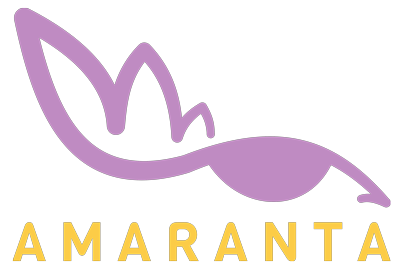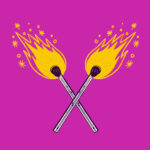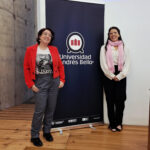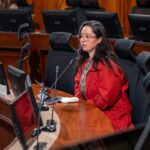Report by Cecilia Ananías Soto and Karen Vergara Sánchez,
journalists from Amaranta NGO.
Translation by Cecilia Ananías with the support of Natalia Bórquez and DeepL.
Main photo: Kena Lorenzini.
This article was written on Tuesday, October 29 and we are counting the crisis since Saturday, October 19, when different cities of the country joined the mobilizations. However, the protests began the day before in Santiago.
Ten days ago, social discontent in Chile erupted in the form of screams, pots and pans and barricades, mobilizing millions of people. It was thus that «the jaguar of Latin America,» as Chilean economists in the 1990s described our country, took off its mask, revealing that it was only a place where inequality accumulated under the carpet, in the face of the passivity of its inhabitants and the blindness of its authorities.
The mobilizations exploded with tremendous force, before an astonished Government, being qualified by the First Lady, Cecilia Morel as «something alien». The first response from the authorities was to declare a state of emergency and bring police and military forces onto the streets, in direct confrontation with the protesters, who were victims of gunfire and strong repression by the Chilean police, Carabineros.
Less than three days of state of emergency had passed and the president himself, Sebastián Piñera, affirmed that it was «a war», even if the enemy only held signs, spoons and pots. The balance of this decision: 20 people killed (information corroborated so far), more than 3,500 people detained, 1,100 people injured, according to information from the government and reports from the National Institute of Human Rights, until the morning of Tuesday, October 29. In addition to these figures, the Children’s Ombudsman indicates that 19 children and adolescents were hit by pellets, 18 were victims of physical damage and more than 240 were detained.
But that did not stop the mobilizations: in spite of the tiredness of the continuous marches and the fear and anguish of the repression, on Friday, October 25, it was possible to call for the largest march in Chile, which gathered more than 1.2 million people, only in the capital; a scenario that was repeated in regions and cities throughout the territory. The streets were overflowing with protest, in postcards that will go down in history. This proved that, in spite of the continuous attempts to criminalize the demonstrations, they continue to be representative of the unease that afflicts all Chileans: the profound need for a dignified life, where every social right isn’t privatized. The mobilizations have been described as the most summoning after the plesbite that ended with the dictatorship of Augusto Pinochet.

«New Constitution Now!»
On Friday night, the government’s strategy was to «congratulate» the peaceful march, and tried to attribute it to them (despite hundreds of attendees releasing videos of repression, water and gas lance trucks). There, the same president who only a few days ago had declared war against those who were protesting, pointed out that «the multitudinous, joyful and peaceful march today, where Chileans are asking for a more just and supportive Chile, opens great paths for the future and hope. We’ve all heard the message, we’ve all changed,» Piñera said, pointing out later that he would ask for the resignation of his entire cabinet of ministers.
At the same time, due to the constant allegations of human rights violations and petitions from some Chilean parliamentarians, the high commissioner of the UN Office for Human Rights and former president of Chile, Michelle Bachelet, announced the sending of a mission that was to arrive on Monday, October 28 in the country. So, quickly, it went from applauding the great march, to trying to return to «normality».
There is no «normality» without justice
Throughout the weekend, the constant speeches inviting people to resume work, classes, and routines on Monday the 28th and this was accompanied by a series of decisions from the government.
First, the curfew that restricted the movement in different cities of the country was removed and then the decrees that established the end of the State of Exception in 15 of the 16 regions of the country were published. In Santiago, the partial operation of the Metro was announced; while in the other capitals, an attempt was made to retake the frequency of intercity buses and commerce. The television channels abandoned the coverage of the mobilizations and resumed their usual programming; they even dedicated long notes to the first shopping centers that opened their doors.
But how can we return to «normality» if the required structural changes are not achieved? Even with public health and education in crisis, even with children dying in the National Service for Minors, even with the same Constitution written in Dictatorship. How to return to work and walk as if nothing, through the streets where dozens were killed and thousands injured? And with no one taking political responsibility for what happened? These were the questions that crossed the minds of the population.
The answer was clearly «We haven’t achieved anything. This goes on”. On Saturday, in Concepción, thousands of people marched again. It was in the Plaza de la Independencia, the same place where Bernardo O’Higgins made the solemn declaration of Chilean independence, that the military decided to fire on the pacific protesters, who fled with terror:
🔴 AHORA. Efectivos militares dispararon sobre manifestantes y cargan contra estos en la Plaza Independencia de Concepción #EstoNoHaTerminado #Chile #Constitucion2020 #Concepción pic.twitter.com/ozc2IRvhTU
— Periódico Resumen (@rsumen) October 26, 2019
While on Sunday, the Region of Valparaiso surprised with a new multitudinous march, which filled the entire coastal area; again, the action of military and police forces was to repress between rubber bullets, jets of water, firearms and tear gas, without caring that there were children, older adults and entire families in the place.
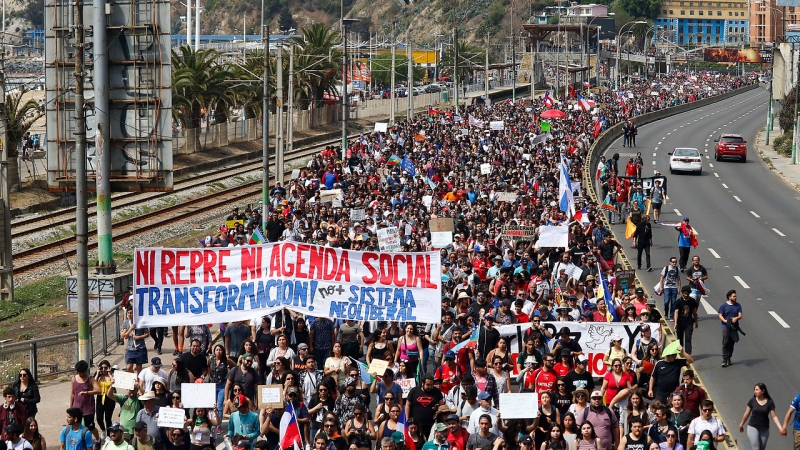
Although the UN commission did not arrive on Monday and its rescheduling was announced «a few days later», the protests continued even more forcefully, in response not only to the lack of structural changes, but also due to such an unusual cabinet change that it seemed like a bad joke. The main actors of the indignation were not removed: Health (Jaime Mañalich, even expelled from the Medical College), Education (Marcela Cubillos, who repressed unemployed educators during the middle of this year), Transport (Gloria Hutt, the subject that caused the rise of discontent).
Santiago, Concepción, Valparaíso and other cities again expressed their discontent, and as the activity ended, public squares and streets spontaneously began to fill with demonstrations and fire, remarking that it is no longer possible to close one’s eyes in the face of so many atrocities.
This third report seeks to summarize the human rights violations committed during the period.
The press as a target of criticism and bullets
One of the social institutions that has been at the center of criticism, as well as repression, has been journalism. In Chile, the media are characterized by being heavily centralized – located in the capital, Santiago – and by belonging to a few powerful businessmen. Although attempts are being made to break the information siege with reports from independent media, web portals, community radio stations, civil organizations and social networks, clearly the reach of these is not the same as that of a national channel or daily part of the duopoly.
One of the most denounced media these days was La Tercera, one of the most read newspapers in the country (in both printed and digital versions), after they adjudicated the incendiary attacks of the Santiago Metro to alleged foreign citizens. The note, signed only as «La Tercera Team,» declared that «according to police intelligence sources, Cuban and Venezuelan citizens participated in the demonstrations. After a while, they also uploaded a second article titled «Government tracks the role of Venezuelans on Twitter”.
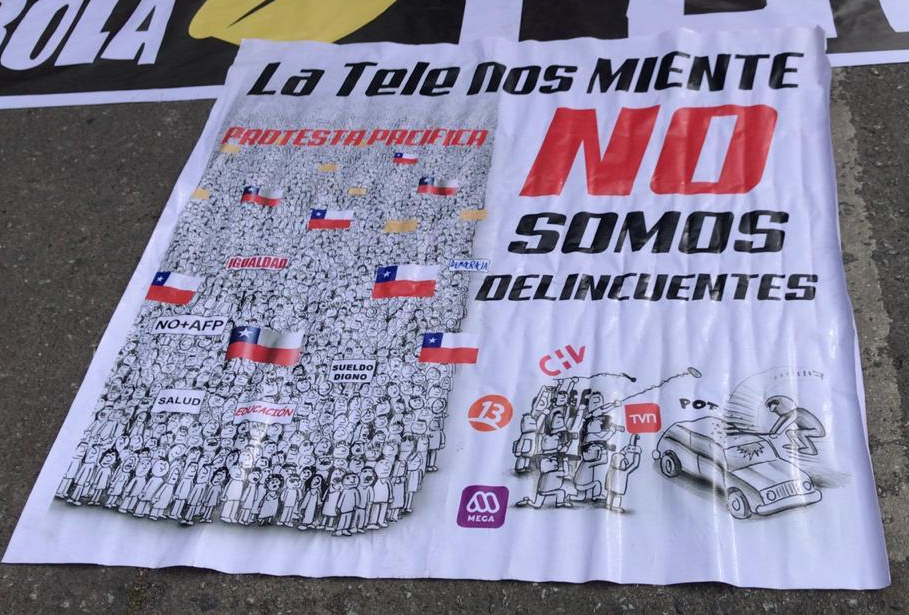
Quickly, this information was discarded by the prosecutor in charge of the investigation of damages in the Metro, Omar Mérida: «The Prosecutor’s Office has no history of specific identities or nationalities”. So, that same day in the afternoon, La Tercera issued a clarification and affirmed that it was «a mistake that we are taking care of,» denying that they were seeking to criminalize foreign citizens living in Chile, although clearly that was the effect of the note, in addition to increasing the «conspiranoia”.
This is not the only media accused of spreading false information or criminalizing the social movement. There are constant informative notes focused on material damages – burning of supermarkets, destruction of subway stations – over human rights violations and deaths due to State action, which generates that certain sectors of the citizenry see social protest with bad eyes, justifying State violence and demanding the return of the State of Exception and curfew. In addition, the Federation of Television Channel Workers denounced how the president and his former interior minister, Andrés Chadwick, summoned top television executives to La Moneda on October 26. «The country must know what the government’s intentions have been to summon the directors of these television media, in an interventionist practice that threatens the independence that the media should have in a democratic society,» declared the College of Journalists.
But while this happens in media with more reach and power, there are other communicators trying to generate other types of coverage, who have also been exposed to violence. This was the case of reporters from the independent media Piensa Prensa, who were beaten by Carabineros – Chilean police forces – while recording their violent actions.
As Sacha Rojas told El Desconcierto: «We noticed an illegal detention of a person who was dragging on the floor and being hitted with a police stick in the ribs. We always kept a considerable distance. There, «one of the carabineros, without any provocation, began to beat all the press and the last one was me, after having beaten all the people who were taking pictures. I said ‘I’m press’; he hit me three times on the head with the police baton, throws me to the ground and I lose consciousness for a few seconds. After coming to, he faced the cash, but the picket left the sector.
URGENTE | URGENTE (19:50)
CARABINEROS APALEARON COBARDEMENTE A NUESTRO EQUIPO DE PRENSA. Fueron brutalmente golpeados por el piquete (05-03 Alvarez) Furgón, B-489 Aquí registro de la descomunal golpiza.
. URGENTE URGENTE@inddhh pic.twitter.com/c3decmuKEm— PIENSA.PRENSA (@PiensaPrensa) October 24, 2019
It would be one of the first public denunciations, many more to come. In Concepción, cameraman Alejandro Torres was shot in the eye and left in a serious condition. Although he later managed to stabilize himself, he ended up with the loss of the eyeball. That same day, Fernando Venegas, a journalist and academic from the University of Concepción, was shot in the chest. Also, from the local media, Sabes.cl, they denounced that one of their graphics, the photographer Jasna Núñez, was run over by a group of Carabineros on horseback, who did not assist her. The Association of Journalists of the area condemned these events and also accused a page of citizen journalism, Amigos Penquistas, of inciting people to attack the office of another medium, Radio Bío Bío, and of spreading false news.
While in the north of the country, in Arica, three journalists from the newspaper La Estrella de Arica, Estefani Carrasco, Patricia Torres and Alfredo Sanhueza, not only denounced having been arbitrarily detained, but in the case of the women, they were forced to undress in a police station and make squats with their underwear down, in order to humiliate them. This is one of the 18 lawsuits for sexual violence being filed by the National Institute of Human Rights.
Even a group of Argentine reporters, Nazareno Roviello (La Retaguardia), Andrés Masotto (Radio Presente) and Leandro Díaz del Campo (ANCAP) were held for long hours at Santiago Airport and were about to be deported because the content on their social networks «incited hatred. After the intervention of the INDH and several parliamentarians, the measure was revoked.
La PDI reconsideró decisión de no ingreso de los periodistas argentinos Nazareno Roviello (La Retaguardia), Andrés Masotto (Radio Presente) y Leandro Diaz del Campo (ANCAP) y se les permitió entrar a Santiago. pic.twitter.com/mv34ECuSFR
— INDH Chile (@inddhh) October 27, 2019
The right to live peacefully?
Not only journalists are exposed to state violence. Complaints of activists and social leaders arbitrarily and illegally detained accumulate daily. Previously, we mentioned the arrests from their homes of Pablo Ferrada, Anais Pulgar and Valentina Miranda, all militants of the Communist Youth. Also, the sociology student and environmental activist, Francisco Reyes Aguayo. In addition, Rodrigo Martínez Caices, student leader of the Arturo Prat University (UNAP), was detained in his home in Iquique, information that was later corroborated by the Human Right’s National Institute (INDH):
Un joven, que se identifica como dirigente estudiantil y de nombre Rodrigo Alejandro Martínez (18607918-3), es detenido esta noche por @Carabdechile.
La detención ocurrió en la intersección de calles Amunátegui con José Joaquín Pérez, en #Iquique. @inddhh #LoQueLaTeleNoMuestra pic.twitter.com/ZfSrOUvxkq
— RADIO PAULINA (@radiopaulina) October 28, 2019
To this is added the denunciation of the boxer and activist for the rights of children and adolescents, Cristóbal Yessen, who was detained in Santiago Centro during an identity check. The sportsman, known for his strong fight against the violence faced by children and youths in the National Service for Minors (SENAME), said in his social networks that the police officer told him he was arrested for «talking shit” in his social networks. In the police station he was tortured «hitting my face, head and hands. They scratched my abdomen and back, caused a serious trauma to my eye, which could lead to a partial loss of vision. My lawyer, Pía Corvalán, was never able to talk to me, because I was incommunicado.
No tengamos miedo de alzar la voz, por 30 años de injusticia, de dolor y de saqueo.
Gracias a todos/as quienes me han apoyado, me han enviado sus buenas vibras. Disculpen no poder contestar mensajes , tengo un trauma severo en un ojo y están determinando si hay algún daño mayor. pic.twitter.com/TT6m2UL1h5— Cristóbal Yessen (@CristobalYessen) October 29, 2019
The eye trauma has been a distinctive attack by agents of the state. As reported by the Medical College and the Chilean Association of Ophthalmology, more than 100 people have lost their sight in one eye from the impact of pellets until Oct. 27. These entities specified that «from October 19 to 26, 96 patients with Severe Ocular Trauma presented themselves, of whom 84 (86%) were men and 12 (14%) were women. Of the total number of patients, 29 (32%) presented Ocular Trauma with an Open Globe (ocular burst 15, ocular penetrating wound 14) being the main mechanism of action wounded by rubber bullets (82% of the total). The most serious thing is that this was caused by agents of the State,» they added, pointing out that they had never had such a large number of similar cases in such a short period of time.
Natalia Aravena Contreras, a young woman known for reporting on beauty products free from animal cruelty, was one of those affected by gunshot wounds. She had left to march on October 28 in downtown Santiago, when she was surrounded by police repression, so she tried to get away. «I turned to see again where [the police forces] were coming from and I felt a very strong blow to my right eye. I only managed to cover my eye and between the stunned I couldn’t see. Lucky for me that a Health Technician saw me and helped me. His evaluation was an ocular burst and he will most likely lose it. «I went out because I wanted to fight against the inequalities that have us living badly, with unhappy and sad people. But the police is playing at war […] they took my eye, but not my desire to fight.
La Naty es piola, la Naty solo salió a manifestar su descontento.
La Naty perdió un ojo a manos de carabineros.
Hoy siento rabia y pena de ver alguien tan bakan sufriendo.
Por ti Naty, por y ti y todos.
Vas a pagar Sebastián.#ChileNoSeRinde #fueraPiñera pic.twitter.com/KtuLbV5bV7— Queen Bee 🐝👑 (@MissJaiiZavala) October 29, 2019
Another serious case that was made public was that of a 16-year-old adolescent, identified only as D.U., who was passing through her family in La Pintana, when they were surrounded by police repression of the people. There, she was shot by a civilian who, because of his posture and the weapon he had, his father described «as an expert, as a military man”. The projectile pierced her lung and broke her spine. She almost died, but was stabilized and out of vital risk. The diagnosis indicates that she will become paraplegic.
The body as conquest territory
In addition to people with serious injuries, eye trauma and arbitrary arrests, there is also sexual violence by State agents. The INDH has already added 19 complaints for sexual crimes filed by 40 victims. Of these, 14 are minors, 20 are women and 6 are men. One of the victims, «was lying face down against the garbage and with the service weapon was threatened with being shot if she moved. Then, with the same weapon, her body was touched and she was threatened with being penetrated with a rifle. Another was forced to sit naked, insulted, and threatened with physical sexual violence in a police station.
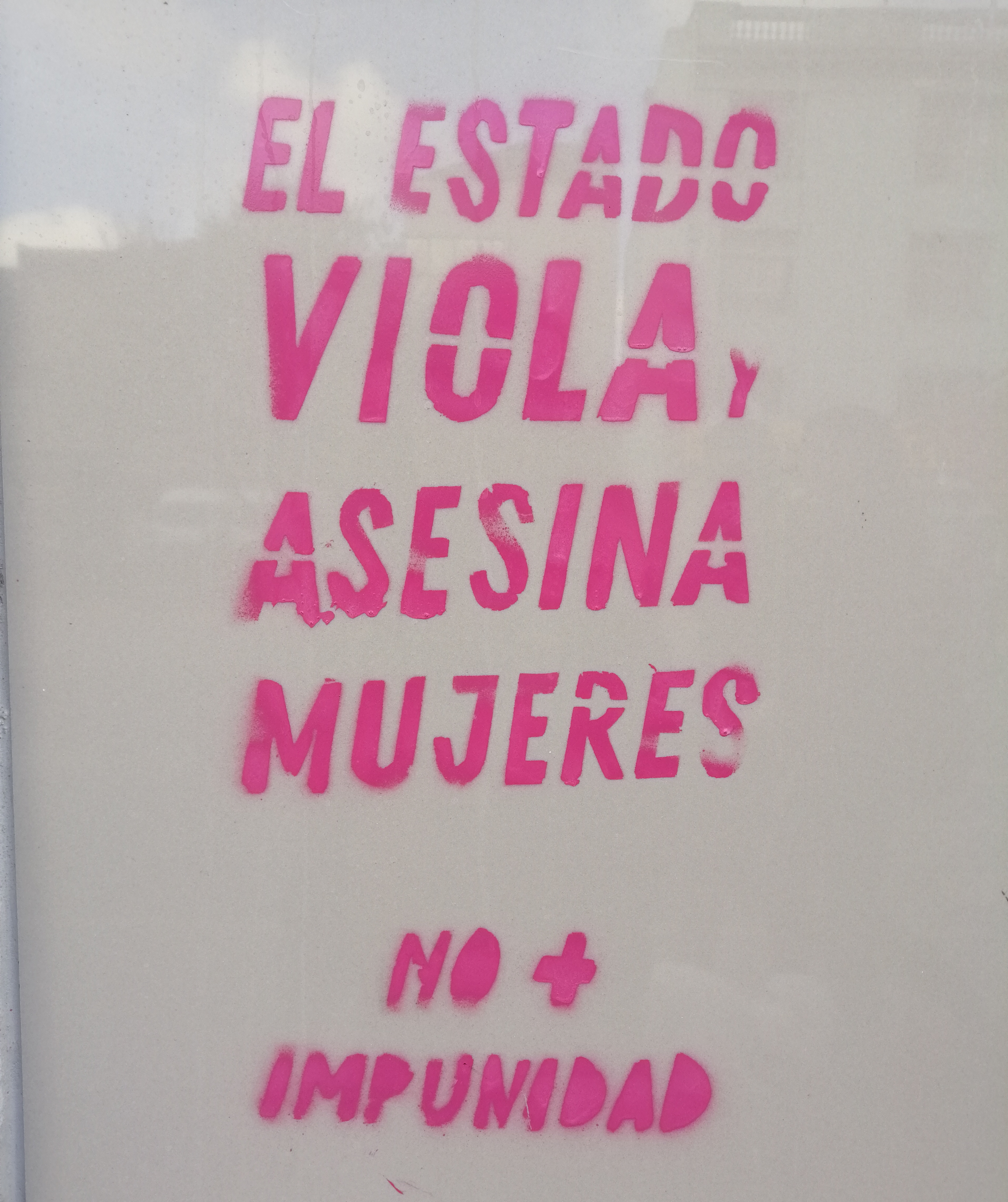
«The State rapes and murders women. No more impunity»
«Before I entered the cell, they took me to a bathroom, and they checked my clothes, my pockets. They made me take my shoes off, my socks off, then they said, ‘Now, pull up your T-shirt, show me your breasts!’, I walked without a bra, then ‘pull down your pants!’, and I’m ready and they say, ‘Put your pants down!’, ‘You have to bend down now’, without explaining why, nothing,» Barbara Urquieta told The Clinic.
The dissidencies are also exposed to this violence. A Catholic University medical student, Josué Maureira, publicly denounced having been tortured and sexually abused by carabineros of the 51st police station of Pedro Aguirre Cerda. From his university they supported him in a document in which they relate the facts: «They kept him handcuffed and thus he was beaten without any provocation and insulted for being homosexual”, a matter that his victimizers deduced because he walked with his nails painted red. Then they undressed him completely and also sexually abused the victim within the context of the torture he was suffering at the time. Subsequently, he declared that he had been threatened with death by the Carabineros.
Shortly after this complaint, the case of Lucas Rocha came to light. This is the second known case of a person belonging to the LGBTIQ+ community who claimed to have been raped by the Carabineros: «I was walking along the Alameda, I wasn’t doing anything, I was going home and they put me in a truck,» he said. After beating him, torturing him and raping him for about two hours, he was thrown from a van in the heart of downtown Santiago, where he was found and assisted by passers-by.
Baquedano Station, transfer to 1973
Another serious accusation of human rights violations was that the Baquedano Station of the Santiago Metro was being used as a torture and illegal detention center. It all began when Nicolás Lüer, 22 years old, denounced the existence of Carabineros in this place, where the 60th Police Station operates. «Lüer accused himself of having been beaten with wet towels and suffering a dislocation in the knee, and said he had heard shots with rubber bullets and had seen other demonstrators hanging from the ceiling by his hands, according to a publication made by his sister through Instagram and a subsequent story given to his lawyer,» the independent media Interferencia reported.
The indictment and investigation began on Wednesday the 23rd at dawn. At noon, La Tercera published an article titled «Judges who became Baquedano station: ‘We did not find people detained, let alone hanging from the ceiling'». The text sought to completely reject their denunciation. But as Interferencia and Radio Canal 13 informed, when they arrived there were no people, but they had reason to believe that two hours earlier people had been tortured in the same place.
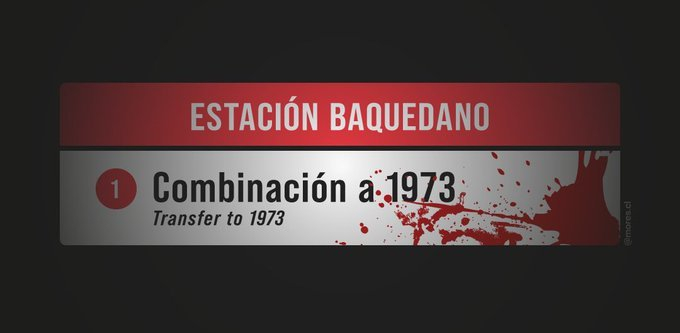
As Judge Daniel Urrutia stated, the police were nervous, agitated and fell into contradictions. The place of torture, which is not usually open to the public, was vividly described by the victim. They also found seven shotgun shells, six of them already percussed and plastic ties. There were no traces of blood, but hours before Carabineros had completely cleaned the place, claiming that they had done so because they had soiled the stairs with a chemical bath. In a new interview, the same judge added that everything happened in a blind spot with no cameras, so the investigation continues.
Not only numbers
So far, 20 deaths have been reported by the Chilean government, at least officially. From the earliest days, these announcements have remained to deliver figures, rather than to deepen into their names, histories or the conditions under which they were killed. They seem to be just numbers that are left over. Even as some were found burnt inside looted and burned establishments, they were associated with robbery. As it was the case of an adult, whose burnt corpse was found in a Construmart – chain of hardware stores – in La Pintana, Metropolitan Region.
I
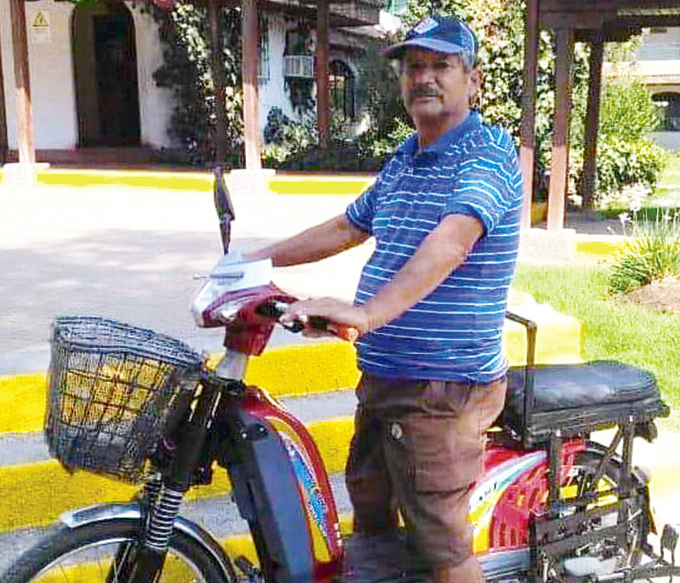
t was not until several days later that he was identified as José Atilio Arancibia Pereira, 74 years old. His family had filed a complaint for alleged misfortune after «don Tilo» was lost in the midst of demonstrations and fires. As soon as they recognized him, they threw on the ground the theory that he was looting: he was suffering from Alzheimer’s and had become disoriented.
A similar criminalization was suffered by Manuel Rebolledo Navarrete, a 23-year-old man from the town of La Libertad in Talcahuano, who was run over by a military truck, driven by a Navy infantryman. Rebolledo was accused of participating in the looting of the refrigerators of a fishing boat – as if that would justify his death – but his relatives denied this, affirming that the young father was in a local court when he saw that looting and strong repression were taking place, so he tried to flee back to his home. That’s when the state agent went off the road and ran over him with the vehicle, killing him. This Navy infant was formalized for involuntary manslaughter and then was reinstated to his functions.
Rebolledo’s story, told by close relatives, was collected by the Frente Audiovisual Collective in a video entitled «El Polera»:
[youtube https://www.youtube.com/watch?v=8WRPG8x-4Hc]
Another of those killed by state agents was Álex Núñez, a 39-year-old electrician and father of three children, who went out on the night of Sunday, 20 October to make some deliveries. When he arrived at the Juan José de Rivera Plaza, he was intercepted by the police. It was the second day with the traffic restriction and it had been decreed earlier than the previous day.
«They ambushed him from behind and there they hit him on the head, all the time on the head,» says Rodrigo Núñez, his son. This young man was demonstrating in his neighborhood when he saw that the street «was walking as he could. When he saw him arrive, it was him. He was my daddy, with his face disfigured. That’s when I told him to go home. We brought him here and after a while my mother came to see him,» he adds. Alex told his son that his head hurt and he just wanted to lie down. At eight o’clock in the morning the next day, Rodrigo’s uncle called him on the phone and told him he was no longer breathing. He died in the early hours of Tuesday due to the beatings by Carabineros Special Forces.
[youtube https://www.youtube.com/watch?v=mf9EzE8lue0]
Another victim included in the complaints before the State is José Uribe Antipani, a 26-year-old welder and father of a year and a half old child. The 26-year-old, José Miguel Uribe Antipani, died while moving from Santiago to Curicó – his hometown – from a gunshot wound to the thorax by a soldier; two other friends accompanying him were injured. His father, Nelson Uribe, told The Clinic that «they were hitting a little pot and the military found nothing better than to kill them».

These are just some of the deaths recognized by the state. There are other deaths that have not entered the official figures, while citizens demand their investigation, as was the case of 36-year-old street artist Daniela Carrasco. The body of «La Mimo», as it was known, was found hanging from a fence in the community of Pedro Aguirre Cerca, south of Santiago de Chile. The Legal Medical Service stated that she had died by asphyxiation and that it was suicide; while neighbors denounce that she was seen for the last time when she was detained by a group of Carabineros.
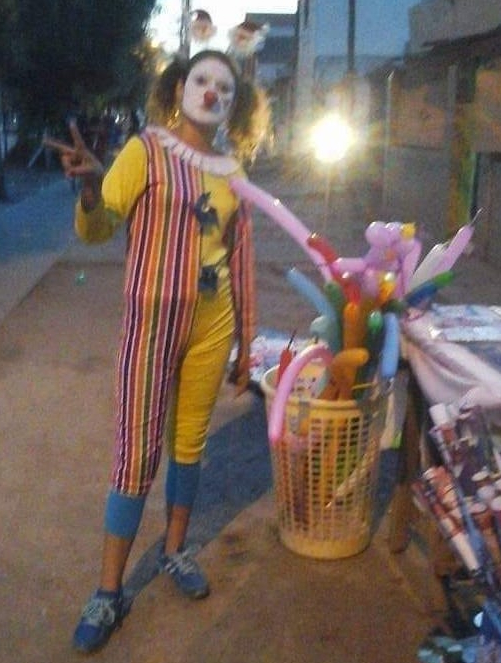
At closing
As this report was being written, throughout the day on Tuesday, October 29, mobilizations continued throughout the country, as did human rights violations. The nursery school teachers took to the streets, denouncing the problems of the «Sala Cuna Universal» project that the country wants to promote; they met the police forces attacking them with jets of water, gas, tear gas and pellets.
A march was called to reach the Palacio de La Moneda, but this was not achieved due to the strong repression, which was so violent that even a Human Right’s observer received seven shots fired by agents of the State, so he had to be transferred urgently to an assistance center:
[🔴 URGENTE] Observador del INDH se encuentra herido por siete balines disparados contra su cuerpo, es trasladado de urgencia a un centro asistencial desde la Alameda pic.twitter.com/h9dX7nwqKF
— INDH Chile (@inddhh) October 29, 2019
Protesters in Santiago have found large perimeters near La Moneda surrounded by Carabineros Special Forces troops, as well as gunmen stationed in the buildings surrounding Paseo Bulnes. Recently, London 38, a former center of torture, repression and extermination during the dictatorship of Augusto Pinochet, and which at present was recovered and managed as a space of memories open to the citizenry, denounced that police had intentionally gassed the space:
Hace minutos @Londres_38 fue atacado por @Carabdechile quienes lanzaron gas con zorrillo a este espacio de memorias que presta apoyo de primeros auxilios.
— Londres38 (@Londres_38) October 29, 2019
A Ciper report on Chilean police documents revealed by a hack showed how Carabineros monitored union, student and environmental groups as «targets of interest».
Amnesty International assured itself that the human rights violations that have occurred in recent days in Chile are comparable to the realities of Venezuela, Nicaragua, Mexico and Honduras. Meanwhile, the arrival of the UN Commission on Human Rights, which will begin its work in Chile this Wednesday, the 30th, is expected.
Due to this international pressure, and the questioning of President Piñera about his management and the human rights violations that are occurring in the country, it was decided to cancel the APEC and COP25 conventions, which would be held in November and December of this year. The president is surrounded by null foreign support that has had its violent repression and fear of suffering a role of proportions in front of the foreign press, presidents and demonstrations that could have been triggered even more forcefully.
Do you want to contact us or do you have any testimonials? Send a message to voces@amarantas.org
Would you like to support us? Write to us at hola@amarantas.org
